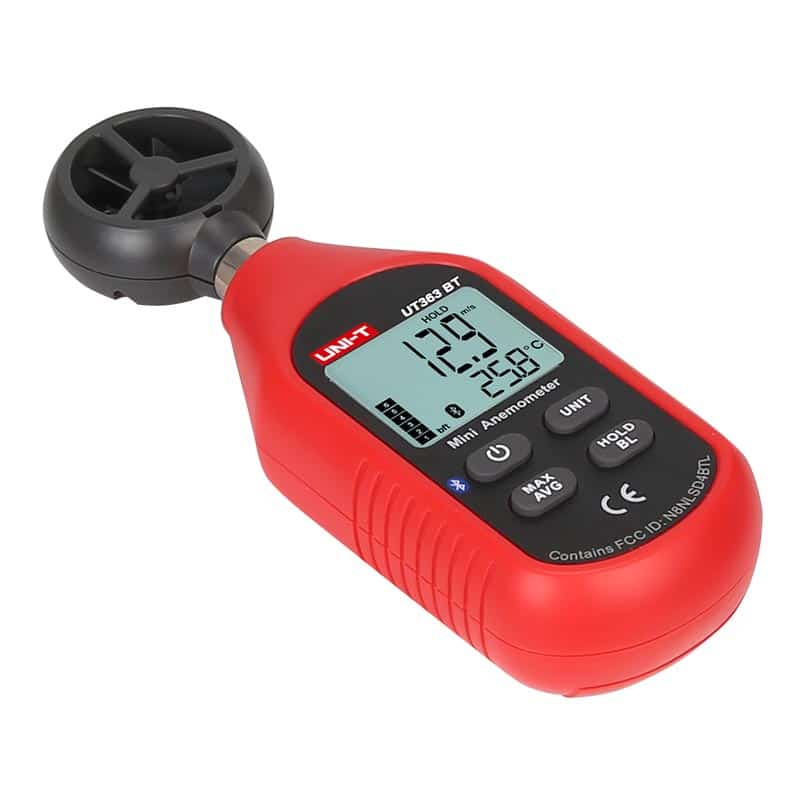Exploring the Functions and Benefits of Anemometers for Weather Enthusiasts and Professionals
From cup anemometers to sonic anemometers, each type brings its one-of-a-kind collection of advantages and applications, dropping light on numerous elements of atmospheric problems. As we delve right into the functions and benefits of anemometers, a deeper understanding arises not only of dominating weather condition phenomena yet likewise of the broader effects for markets like wind energy manufacturing and environmental study.
Significance of Anemometers in Climate Tracking
Anemometers play an essential role in climate tracking by offering exact dimensions of wind speed, aiding in forecasting and understanding climate patterns. These tools, varying from standard mug anemometers to modern-day ultrasonic anemometers, are important for meteorologists, scientists, and weather condition fanatics alike.

Kinds Of Anemometers and Their Applications
With the crucial role anemometers play in weather monitoring and projecting, recognizing the different sorts of these instruments and their applications becomes essential for specialists and fanatics in the field. The most usual sorts of anemometers consist of mug anemometers, vane anemometers, hot-wire anemometers, and ultrasonic anemometers. Mug anemometers include 3 or 4 cups mounted on horizontal arms that turn with the wind, determining its speed. Vane anemometers, on the various other hand, utilize a freely revolving vane to align with the wind instructions, supplying both wind speed and instructions measurements. Hot-wire anemometers run based upon the principle of convective warmth transfer, where the cooling impact of the air flow is gauged to figure out wind speed. Ultrasonic anemometers make use of ultrasonic noise waves to determine wind rate and direction accurately.
Mug anemometers are ideal and robust for general weather condition tracking, while vane anemometers are preferred for directional measurements. Ultrasonic anemometers are non-intrusive and provide high precision, usually used in research study and specialized weather condition surveillance applications.
Advantages of Using Anemometers in Forecasting
In meteorology, the usage of anemometers provides vital benefits for improving the accuracy of weather condition forecasting. Anemometers measure wind rate and instructions, giving crucial information for forecasting weather condition patterns. By integrating wind data into projecting designs, meteorologists can much better comprehend the movement of climate systems, prepare for modifications in atmospheric conditions, and problem much more accurate projections.
Furthermore, anemometers play an essential function in examining possible weather condition dangers. Keeping an eye on wind rates helps forecasters forecast severe weather condition events such as hurricanes, hurricanes, and winter season storms with higher accuracy. This very early warning system enables authorities to release timely alerts and carry out required safety and security procedures, decreasing the threats to life and property.
In addition, anemometers help in maximizing renewable resource production. By examining wind patterns, meteorologists can recognize ideal areas for wind farms and forecast energy result, contributing to the efficient generation of wind power.

Anemometers in Wind Power Manufacturing
Given the important duty anemometers play in official source giving exact wind data for weather condition forecasting and hazard evaluation, their value encompasses the world of wind energy production. Anemometers are necessary tools in the area of wind power, where the measurement of wind speed and direction is essential for establishing the feasibility and efficiency of wind turbine installations. By precisely determining wind speeds at varying elevations, anemometers aid maximize the positioning and layout of wind generators to take full advantage of power output.
In wind farms, anemometers are strategically placed to collect real-time wind data that is made use of to assess the potential energy production of a site. This data is important in identifying the economic viability of wind energy projects and in forecasting energy generation to make certain grid security. In addition, anemometers help in keeping an eye on wind conditions to additional reading enhance wind turbine performance, avoid damage from high winds, and ensure the safety and security of employees operating in the vicinity of wind turbines.
Enhancing Weather Condition Comprehending With Anemometers

Anemometers play a key role in enhancing our understanding of microclimates. These localized weather conditions can differ considerably from broader regional forecasts, making it vital to have accurate data for specific locations. anemometer. By purposefully positioning anemometers in numerous places, researchers can gather detailed information on how wind acts in various terrains, metropolitan environments, or bodies of water
Moreover, anemometers add to boosting weather condition forecasting versions by giving real-time information on wind habits. This information is specifically useful for anticipating serious weather condition occasions, enhancing agricultural techniques, and sustaining industries like aviation and maritime navigating. Overall, anemometers are important tools that enable us to delve much deeper into the intricacies of weather systems, inevitably causing more exact predictions and better-informed choices.
Verdict
In verdict, anemometers play a critical duty in climate monitoring and projecting by gauging wind rate and direction. Anemometers likewise have applications in wind power manufacturing, more highlighting their significance in check both meteorology and sustainable power sectors.
From cup anemometers to sonic anemometers, each type brings its special collection of applications and advantages, dropping light on different facets of climatic problems. These instruments, ranging from conventional cup anemometers to contemporary ultrasonic anemometers, are important for meteorologists, researchers, and weather condition lovers alike. The most typical kinds of anemometers consist of mug anemometers, vane anemometers, hot-wire anemometers, and ultrasonic anemometers. Mug anemometers are suitable and robust for general weather monitoring, while vane anemometers are favored for directional measurements. Anemometers are necessary instruments in the field of wind energy, where the measurement of wind rate and direction is vital for determining the expediency and effectiveness of wind turbine installations.
Comments on “Comprehending Various Types of Anemometers for Different Applications”